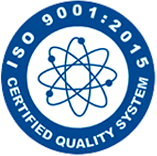X-ray Photoelectron Spectroscopy (XPS) and Auger Electron Spectroscopy (AES) are both surface-sensitive analytical techniques that provide information about the composition of materials, but they operate based on different principles and have distinct applications. Here are the key differences between XPS analysis and AES analysis:
Continue reading “Difference between XPS Analysis and AES Analysis”Category: AES Analysis
Difference between XPS Analysis and AES Analysis
Difference between AES and EDX Analysis
Auger Electron Spectroscopy (AES) and Energy-Dispersive X-ray Spectroscopy (EDS or EDX) are both surface analysis techniques that provide information about the elemental composition of materials. However, they are based on different principles and utilize different types of signals for analysis.
Continue reading “Difference between AES and EDX Analysis”Difference between Auger Electron and Secondary Electron
Auger electrons and secondary electrons are both types of electrons emitted from a material in response to external excitation, but they arise from different processes and have distinct characteristics.
Continue reading “Difference between Auger Electron and Secondary Electron”Difference between AES analysis and esca
AES (Auger Electron Spectroscopy) and ESCA (Electron Spectroscopy for Chemical Analysis) are terms that are sometimes used interchangeably, but they essentially refer to the same analytical technique. ESCA is a more historical term, while AES is a more modern and widely used term. Both terms describe the same method of surface analysis based on the Auger effect.
Continue reading “Difference between AES analysis and esca”Difference between EDS and Auger electron spectroscopy
Energy-dispersive X-ray spectroscopy (EDS) and Auger electron spectroscopy (AES) are both analytical techniques used for surface analysis, but they differ in their principles of operation and the types of signals they detect.
Continue reading “Difference between EDS and Auger electron spectroscopy”Difference between Auger electron spectroscopy and XPS
Auger electron spectroscopy (AES) and X-ray photoelectron spectroscopy (XPS), also known as electron spectroscopy for chemical analysis (ESCA), are both surface-sensitive analytical techniques used to study the elemental composition and chemical state of materials. However, they are based on different principles and provide distinct information about the material.
Continue reading “Difference between Auger electron spectroscopy and XPS”


